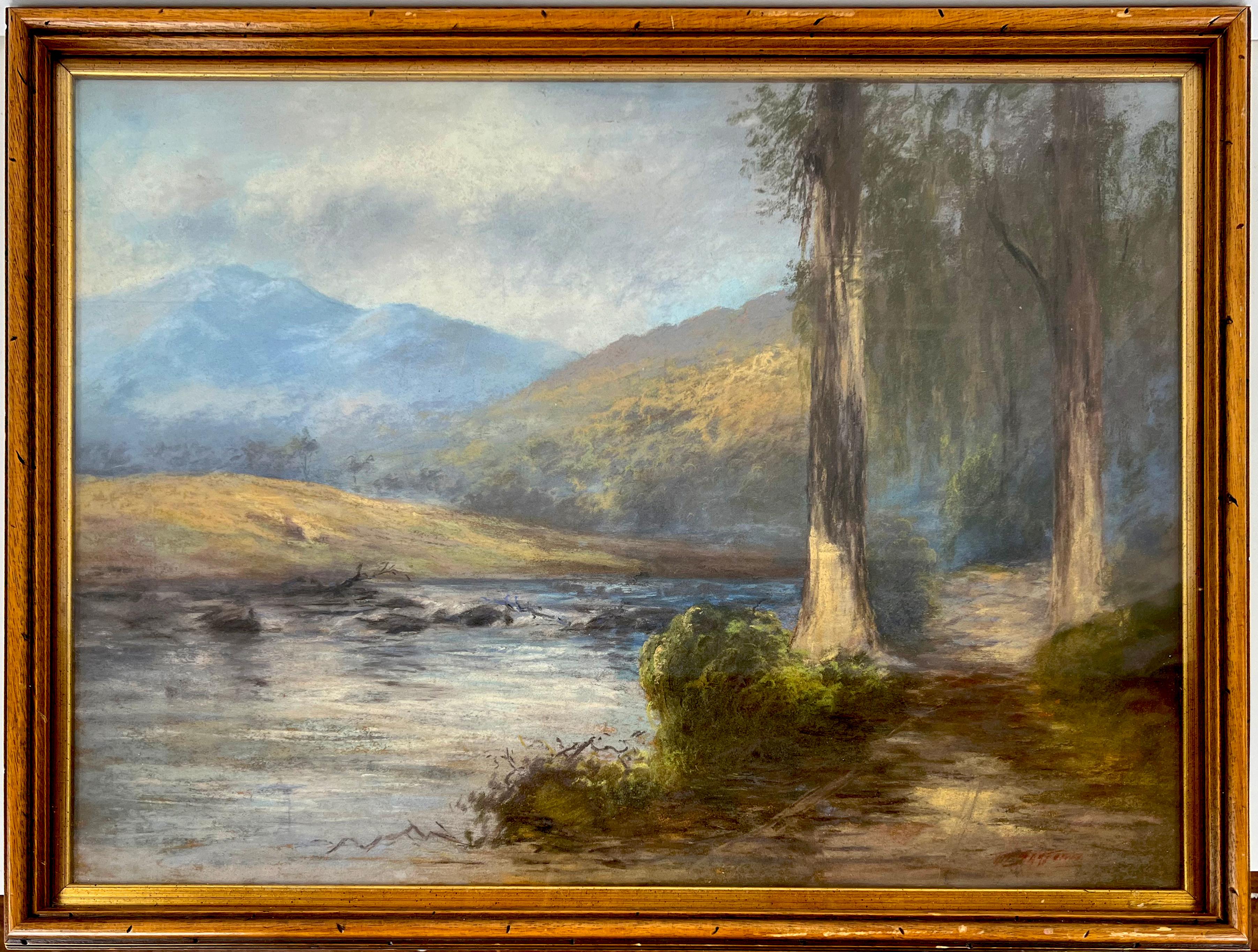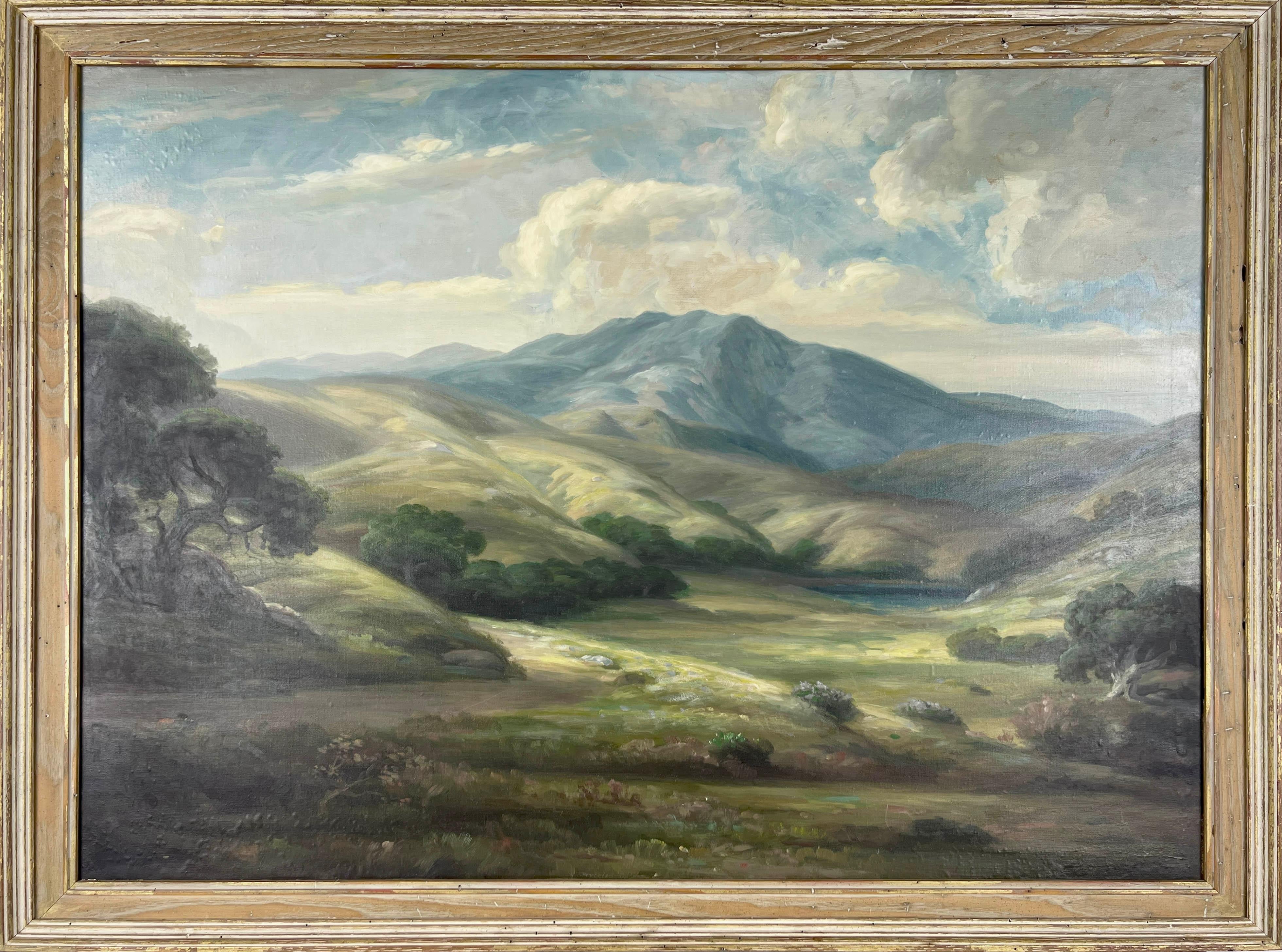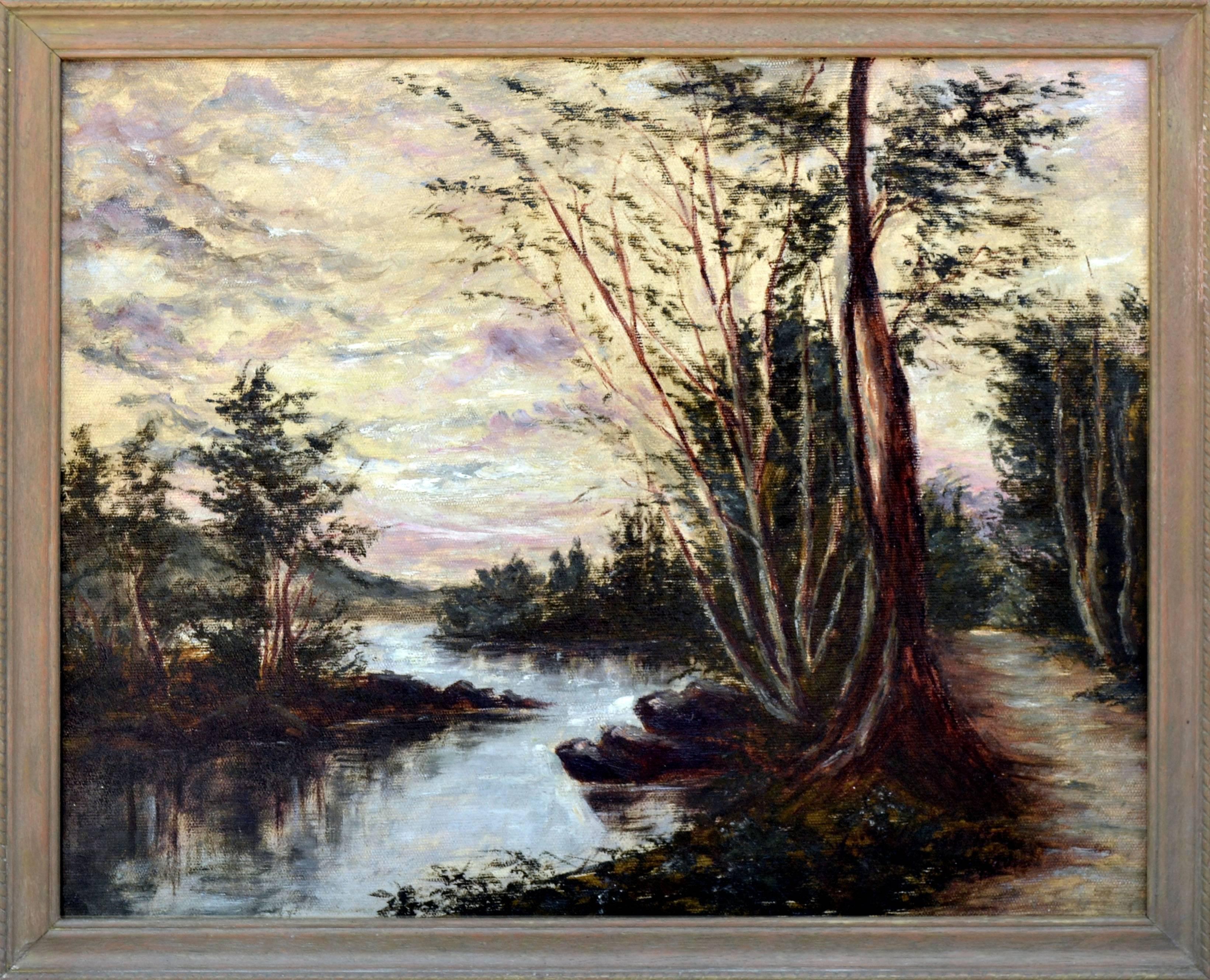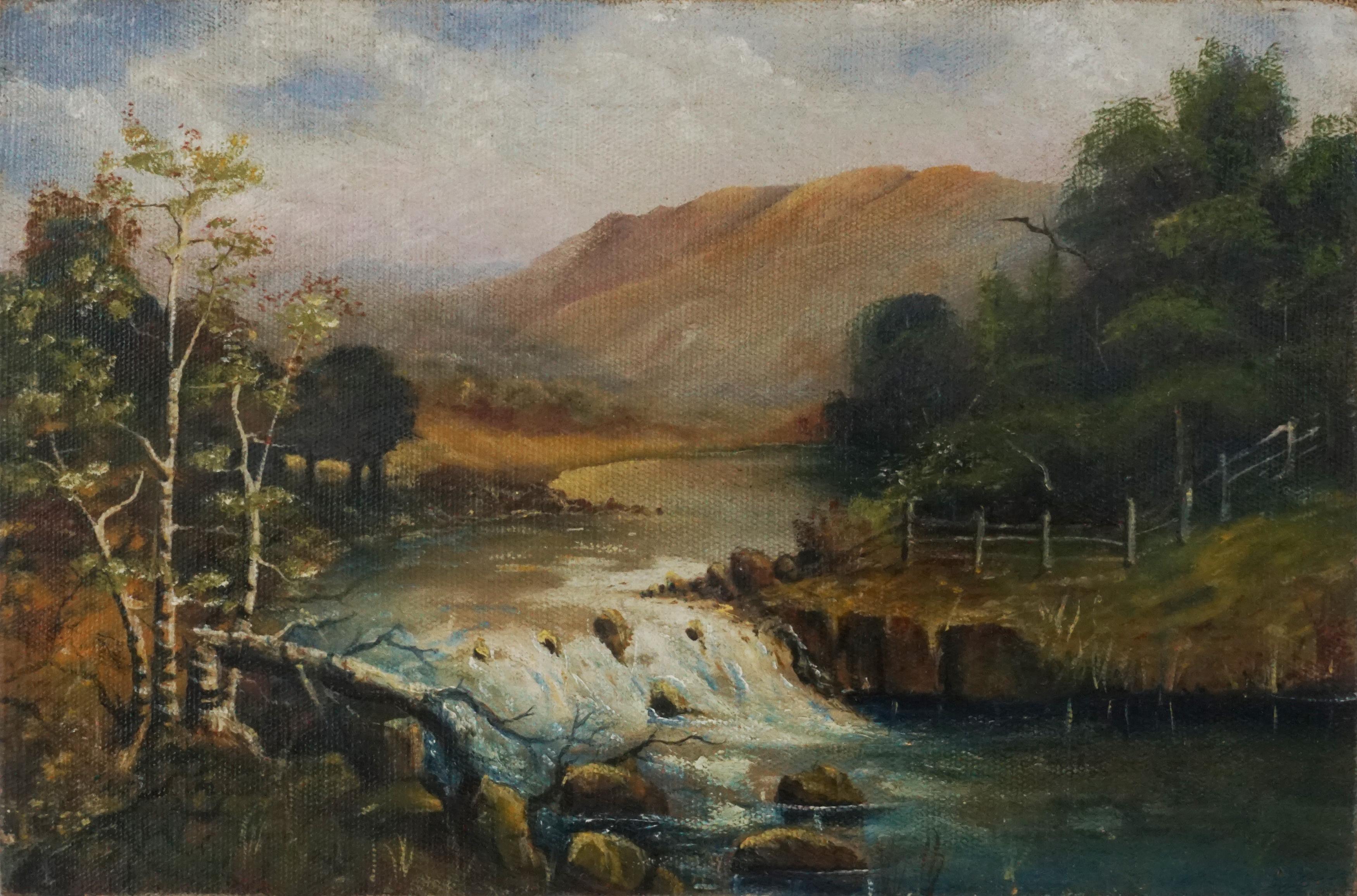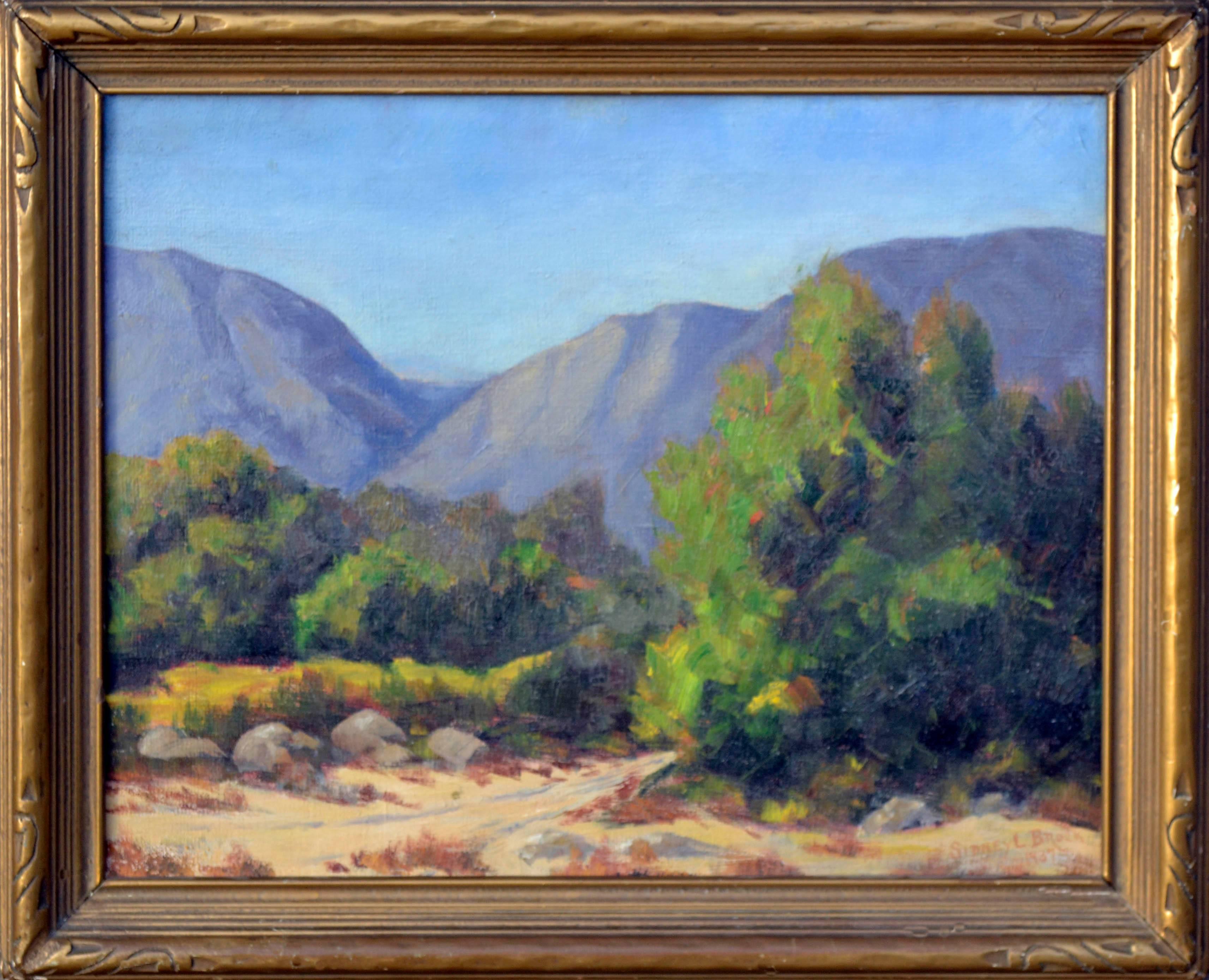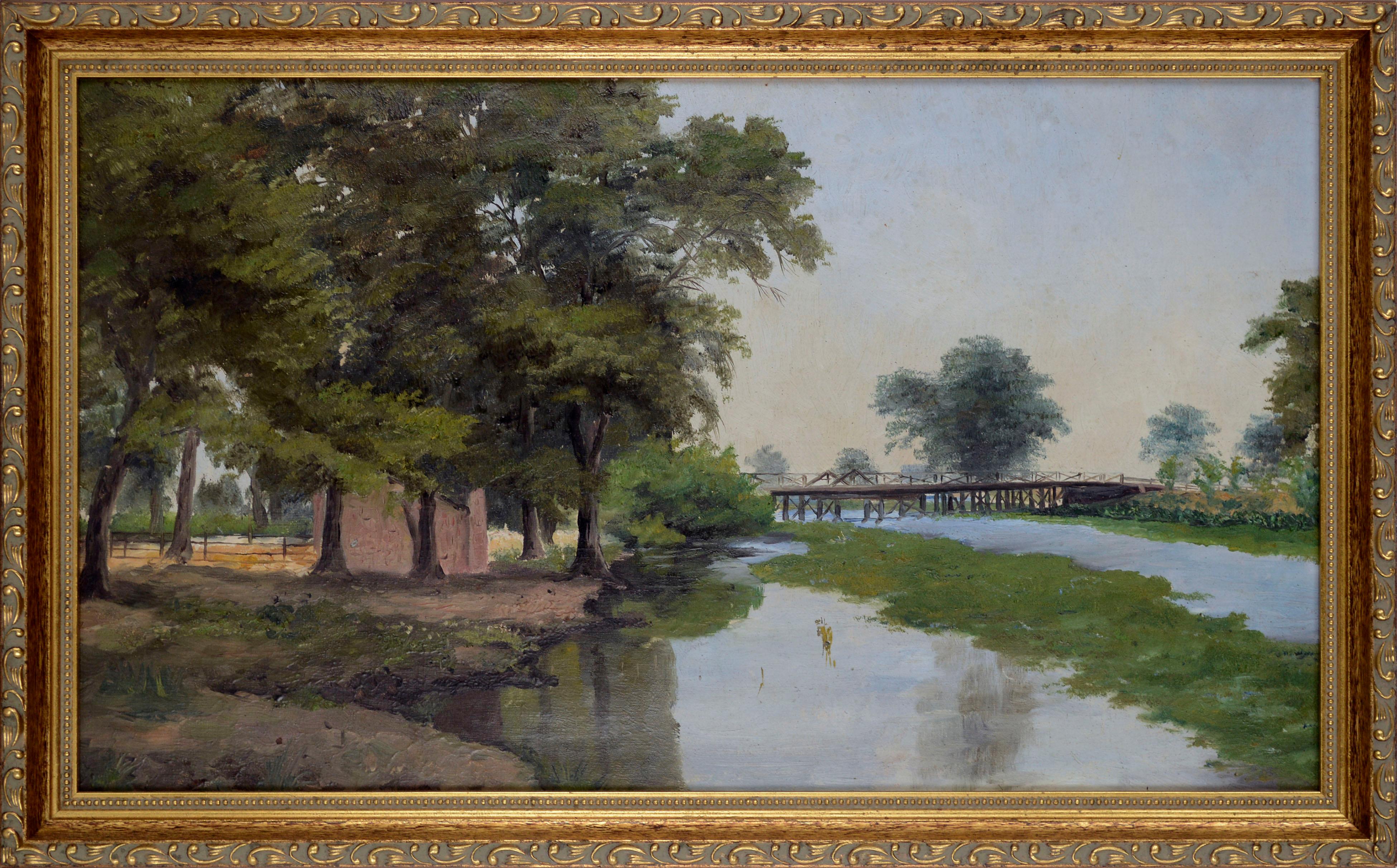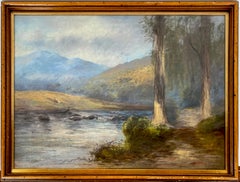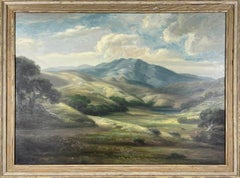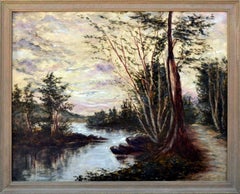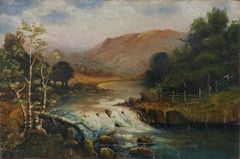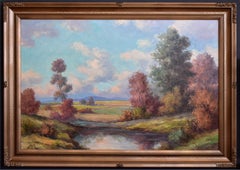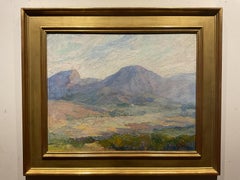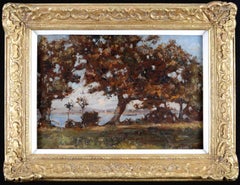Items Similar to Alameda River Below Mt. Tamalpais - Early 20th Century Landscape
Want more images or videos?
Request additional images or videos from the seller
1 of 9
Marius SchmidtAlameda River Below Mt. Tamalpais - Early 20th Century Landscape1909
1909
$1,650
£1,279.36
€1,451.68
CA$2,365.20
A$2,571.82
CHF 1,355.10
MX$31,240.18
NOK 17,036.34
SEK 15,970.19
DKK 10,893.55
About the Item
Beautiful early 20th century landscape of the Alameda River below Mt. Tamalpais by Marius Schmidt (American, 1863-1938). Presented in a giltwood frame. Signed "Marius Schmit" lower left. Image size, 14"H x 20"W.
Marius Schmidt was a resident of Oakland, California between 1909 and 1917.
Born Kolding, Denmark 1868, Marius Schmidt showed a natural affinity for art from his mother's family, and by the age of four was drawing with a natural facility. His father discouraged his artistic talents and when Marius was 12, his father sent him to live in the United States. His uncle appreciated and encouraged his ability and later sent him to Denmark to study under Jorgensen of Copenhagen and Moller, with whom he studied three years.
Upon returning to America, he settled in California where he painted "for many years the wildflowers and scenery of Northern and Southern California; the redwoods, desert, and many of our beautiful missions and gardens throughout the state. . . . Among his most famous and noted paintings are 'Capistrano Mission and Gardens' and 'Ramona's Marriage Place.' "
There are three distinct styles or periods of work. The first is 19th century European Realism; the Second is Impressionism. The third style is California Impressionism, where he adopts a more commercial style.
Paintings in the categories of the first two styles are signed Marius Schmidt, but after 1917, he moved to Southern California where his work is signed Marius Smith, a name change due to anti-German sentiment during World War 1.
Marius Schmidt was known to have lived and painted in the Laguna Beach area and passed away in 1938. Marius Schmidt was a resident of Oakland, California between 1909 and 1917. In both watercolor and oil, he painted coastal views, landscapes, and San Francisco bay area scenes. He exhibited at the San Francisco Art Association. (Edan Hughes, author of the book "Artists in California, 1786-1940", Crocker Museum)
- Creator:Marius Schmidt (1863 - 1938, American)
- Creation Year:1909
- Dimensions:Height: 16 in (40.64 cm)Width: 24 in (60.96 cm)Depth: 2 in (5.08 cm)
- Medium:
- Movement & Style:
- Period:
- Condition:Several small spots of foxing and some minor age toning to paper. Frame is rustic and of the period.
- Gallery Location:Soquel, CA
- Reference Number:Seller: JT-j37011stDibs: LU5422011073
About the Seller
5.0
Platinum Seller
Premium sellers with a 4.7+ rating and 24-hour response times
Established in 1986
1stDibs seller since 2014
3,027 sales on 1stDibs
Typical response time: <1 hour
- ShippingRetrieving quote...Shipping from: Soquel, CA
- Return Policy
Authenticity Guarantee
In the unlikely event there’s an issue with an item’s authenticity, contact us within 1 year for a full refund. DetailsMoney-Back Guarantee
If your item is not as described, is damaged in transit, or does not arrive, contact us within 7 days for a full refund. Details24-Hour Cancellation
You have a 24-hour grace period in which to reconsider your purchase, with no questions asked.Vetted Professional Sellers
Our world-class sellers must adhere to strict standards for service and quality, maintaining the integrity of our listings.Price-Match Guarantee
If you find that a seller listed the same item for a lower price elsewhere, we’ll match it.Trusted Global Delivery
Our best-in-class carrier network provides specialized shipping options worldwide, including custom delivery.More From This Seller
View AllMt. Tamalpais and Stream in the Spring circa 1900
Located in Soquel, CA
Mt. Tamalpais and Stream in the Spring circa 1900
Stream above Lake Bon Tempe with Mt. Tamalpais in the background. A warm spring day in Northern California and the Bay Area. Excelle...
Category
Early 1900s American Impressionist Landscape Paintings
Materials
Oil Pastel, Illustration Board
$2,000 Sale Price
20% Off
Early 20th Century Palo Alto Foothills Landscape Oil Painting
By Bruce Nelson
Located in Soquel, CA
Robert Azensky Fine Art is proud to present Early 20th Century Oil Painting Palo Alto, California Foothills Landscape Painting circle of Bruce ...
Category
1920s American Impressionist Landscape Paintings
Materials
Masonite, Oil, Canvas
Turn of the Century California Riverbend Landscape
By Alice L. Meussdorffer
Located in Soquel, CA
Beautiful turn-of-the-century landscape of a path along a river bend by Alice L. Meussdorffer, a pupil of William Keith, (American, 1871-1949). Presented in a wooden frame. Signed "Alice Meussdorffer" and dated "1900" lower right. Image size, 17"H x 20.75"W. Wood frame; 19"H x 23"L x 1.5"D.
Born in San Francisco, CA on Sept. 5, 1871. Alice was the daughter of John C. Meussdorffer who made the finest hats on the West Coast during the 19th century.
A pupil of William Keith, she was most active as a painter at the turn of the century. During the latter part of her life she gained fame as a florist. Her prize-winning dahlia bulbs were shipped all over the world. She was also an ardent hiker and member of the Sierra Club. One of her dahlias was named "Kaweah" after the river in the Kings Canyon...
Category
1910s Impressionist Landscape Paintings
Materials
Canvas, Oil
$1,080 Sale Price
20% Off
Early 20th Century California Foothills Landscape
Located in Soquel, CA
Wonderful California landscape of foothills with stream, Birch and Oak trees. Unsigned. Unframed. Image size: 12"H x 18"W.
Category
1930s American Impressionist Landscape Paintings
Materials
Linen, Oil
$420 Sale Price
20% Off
1930's California Mountain Trail Landscape
By Sidney L. Brock
Located in Soquel, CA
A beautiful 1930's landscape titled "Trail into California Mountains" by Oklahoman artist Sidney Lorenzo Brock (American, 1869-1943). Presented in ...
Category
1930s American Impressionist Landscape Paintings
Materials
Linen, Oil
$1,580 Sale Price
20% Off
Early 20th Century Bay Area California Landscape with Bridge
Located in Soquel, CA
Beautiful early 20th century Bay Area landscape attributed to California artist Florence Bugbee Banham (American, 1856-1934). This small scale horizontal landscape depicts a peaceful...
Category
Early 20th Century American Impressionist Landscape Paintings
Materials
Canvas, Oil, Cardboard
$920 Sale Price
20% Off
You May Also Like
Landscape with River, California
By Clifford Holmes
Located in San Francisco, CA
This artwork titled "Landscape with River, California, in the Afternoon" c.1950 is an oil painting on canvas by noted California artist Clifford Holmes 1876-1963. It is signed at the...
Category
Mid-20th Century American Impressionist Landscape Paintings
Materials
Oil
"Watering Hole" CALIFORNIA LANDSCAPE
Located in San Antonio, TX
George Devoss
California Artist
Image Size: 24 x 36
Frame Size: 29.5 x 41.5
Medium: Oil
"Watering Hole"
Resident of Los Angeles in 1928-37.
Edan Hughe...
Category
Mid-20th Century Impressionist Landscape Paintings
Materials
Oil
Lovely California Landscape Painting by listed artist John Thomas Nolf, ca 1920s
Located in Baltimore, MD
John Thomas Nolf was born in Allentown, Pa. in 1872. He had his academic studies in Chicago at the Art Institute. He exhibited often at the Institute,...
Category
Early 20th Century American Impressionist Landscape Paintings
Materials
Oil
Wooded River Landscape - Early 20th Century French Impressionist Oil Painting
Located in Sevenoaks, GB
* No US duty or taxes to pay on this item *
A beautful early 20th century French imprressionist oil on panel depicting a wooded river landsape.
The work is superbly executed very,...
Category
Early 20th Century Impressionist Landscape Paintings
Materials
Oil, Panel
Robert Alexander Graham Vintage Western Landscape, Golden Colorado Oil Painting
By Robert Alexander Graham
Located in Denver, CO
Experience the breathtaking beauty of Golden, Colorado, through this exquisite vintage oil painting on canvas by acclaimed American artist Robert Alexander Graham (1873–1946). Create...
Category
1920s American Impressionist Landscape Paintings
Materials
Oil
Edward Glafke 'Carmel River' Impressionist Landscape Painting
Located in San Rafael, CA
Edward Glafke (American, 1925-1997)
Carmel River
Oil on canvas
Signed lower left
Titled on the verso
Canvas: 20in H x 24in L
In a vintage giltwood frame: 24in H x 27.5 in L x 1.5in D...
Category
Late 20th Century Impressionist Landscape Paintings
Materials
Canvas, Oil
More Ways To Browse
Danish Paintings Of The 19th Century
Antique World War 1
California Redwood
Mt Tamalpais
Esther Oil Painting
Eugene Claude
Fjord Oil Painting
Guy A Wiggin
Guy Benard
Howard Post
Jean Arene
Jeanne Oil Painting
John Henry Twachtman
L Taylor
Laguna Beach Plein Air
Lake George Painting
Landscape Painting Nantucket
Landscape Paintings For Sale
